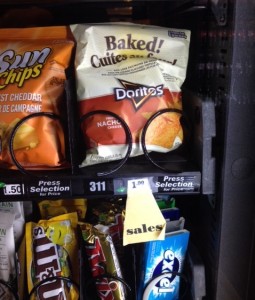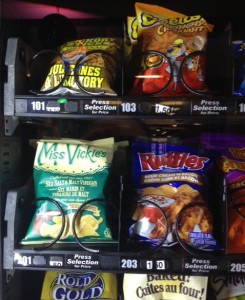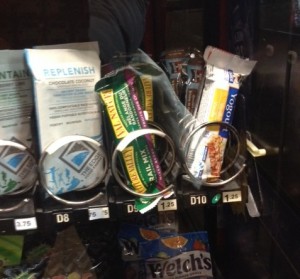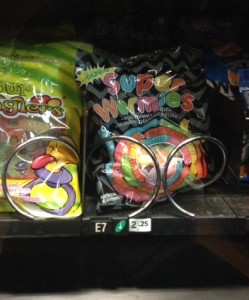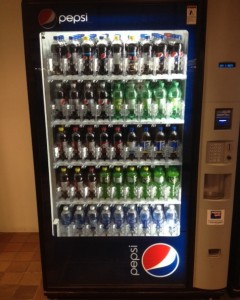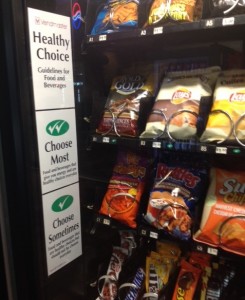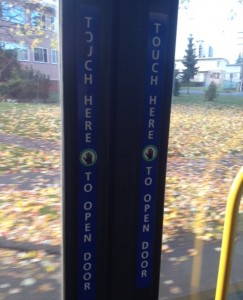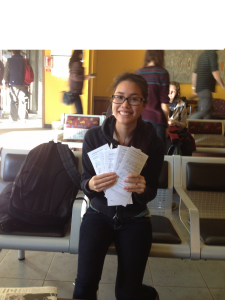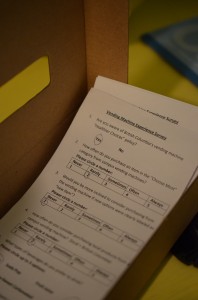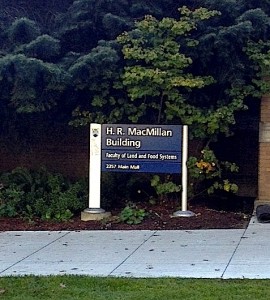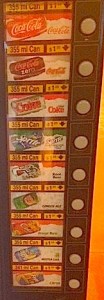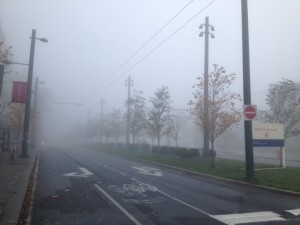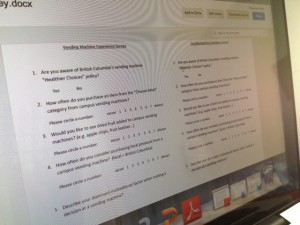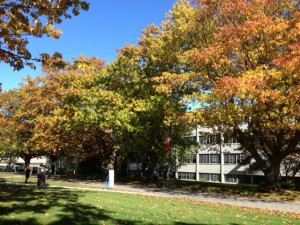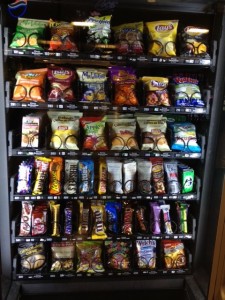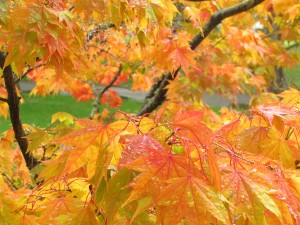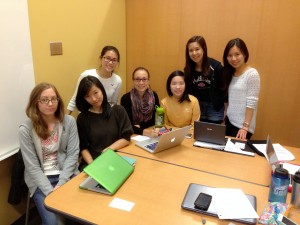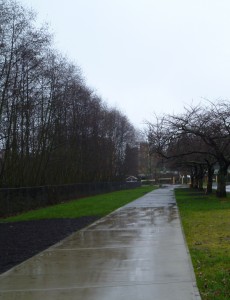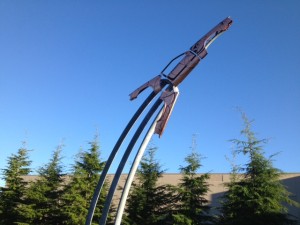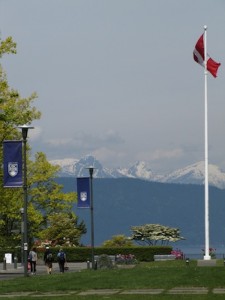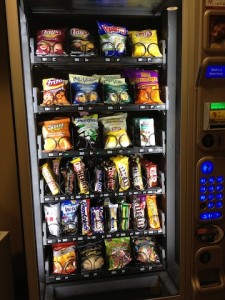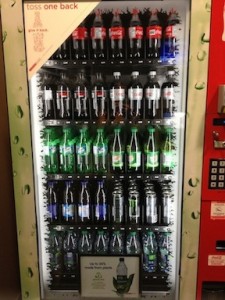Auditing the Gage and the SUB Vending Machines
Using the checklist that was written up the week before, Carmen, Judy, Tyra, Rosemary, and Alex chose one location to audit the vending machines either beside Pie R Squared in the SUB or in the Gage residence last week. We noted any issues that were noticeable with the vending machines as well as positive aspects of the vending machines and recommendations for improvement.
Below are the results of our audit of the SUB Snack vending machines:
SUB SNACK VENDING MACHINES
Was there any dust inside/outside the vending machines?
-
There was a bit of dust on the inside of the vending machine, but not enough to obscure the viewing of the snack items
-
There was a lot of marks on the viewing screen such as fingerprints that should be wiped off
Healthy Choices label correctly placed?
-
There were multiple healthy snacks that were not correctly labeled. Some examples include:
-
The Edge Food Energy bars
-
Apple Chips
-
-
Some Healthy Choices labels were not placed in the correct location. Some examples include
-
Gummy worms
-
Mike and Ike’s candy
-
Other issues we found
-
Price labelling was not clear for all snack items, some were partially obscured while others didn’t even have a price tag.
-
Different flavours of the same granola bar were mixed together. For example, there was a mix of strawberry and blueberry flavored bars in the same column of the vending machine. This can affect vending machine sales
Positive aspects of the snack vending machines
-
Lighting was pretty good
-
Large screen to make the snack more visible
-
Vending machines can take cash/credit/debit and UBC card
-
Baked chips, a healthy choices item were placed at eye level to attract consumers
-
Refilling of snacks was placed with the newest options in the back
Recommendations
-
Have signs like “local”, “new”, “gluten free” to promote healthy items
-
Include veggie straws and tuna salad kit
-
We found that other vending machines in the SUB sold veggie straws and a tuna salad kit, options that were not seen in the SUB vending machines we audited
-
-
Lower the price of the healthy snack items if possible
-
The healthy options are on average $3.75 compared to the chocolate bars that cost $1.75.
-
-
Remove repeated snack options seen in two relatively close vending machines. Substitute with healthier new snacks.
SUB BEVERAGE VENDING MACHINE
Was there any dust inside/outside the vending machines?
There was a bit of dust on the inside of the vending machine, but not enough to obscure the viewing of the snack items
However, there was a lot of marks on the viewing screen such as fingerprints that should be wiped off
Healthy Choices label correctly placed?
No signs of a Healthier Choices policy being used
Other issues we found
-
Lighting was not bright. It was a little dim and the very bottom row of beverages were hard to see
-
Pricing was placed at a slanted angle and difficult to notice at first
-
Might be because of the design of the vending machine
-
Positive aspects of the beverage vending machines
Lighting was pretty good
Large screen to make the snack more visible
Vending machines can take cash/credit/debit and UBC card
Refilling of beverages was placed with the newest options in the back
Recommendations
-
Find a way to make the last row of the vending machine more visible to the public
-
Add a variety of beverages, instead of the same ones found throughout campus vending machines.
-
Examples include unsweetened tea
-
GAGE SNACK VENDING MACHINE
Was there any dust inside/outside the vending machines?
There was no dust inside/outside of the vending machine
Healthy Choices label correctly placed?
Several items in the vending machines were not correctly labelled
-
Welch’s fruit snacks
-
Granola Bars
-
Maintain/Fortify – Ancient Grain nutrition bars (local)
Other issues we found
None
Positive aspects of the snack vending machines
-
Vending machines can take cash/credit/debit and UBC card
-
The vending machines were brand new
-
All lights and buttons were in proper order
-
Recommendations
-
Location of the vending machines are obscure, hidden in a corner. Beside the machines is a Gage Residence mini-mart. To promote sales, it is r
-
ecommended to move it to an open location.
-
Proper labelling is required so as to not confuse customers and promote the consumption of unhealthy foods.
-
Relocating healthier choices up to eye-level.
GAGE BEVERAGE VENDING MACHINE
Was there any dust inside/outside the vending machines?
There was no dust found inside/outside the vending machines
-
Beverages could be clearly seen inside
Healthy Choices label correctly placed?
No signs of a Healthier Choices policy being used
Other issues we found
-
All the bottled water were located at the bottom of the vending machine, not at eye level
-
Not a large variety of drinks in the vending machines
-
Only pop and water were found
-
Positive aspects of the beverage vending machines
-
Vending machines can take cash/credit/debit and UBC card
-
Lighting was very bright
Recommendations
-
A larger variety of drinks would be better to promote lower-calorie alternatives.
-
Moving healthier drinks up to eye-level.
Outcome of meeting with Victoria and Liska
Tyra, Katherine, and Aveir met with Victoria and Liska on Thursday, November 7th to update them on our research progress while clarifying any questions we had.
One topic that came up was refrigerated snacks: vending machines with refrigerated units use up a lot of energy, going against the climate action plan. Furthermore, refrigerated vending machines can be noisy, therefore cannot be placed in specific locations on campus (e.g. library). Nevertheless, our group will consider other pros and cons of vending machines with refrigerated units.
As we focus on beverages, Victoria would like to see at least 50% of every vending machine be comprised of healthy beverages. Our group will have to audit the beverages again to check how many of each type of beverage are offered. Before we perform the audit, we will be establishing guidelines as to what is considered a healthy beverage.
We are relieved that Victoria did not ask us to analyze the vending machine sales. Most of us were frustrated last week with the sales analysis provided to us because we could not determine how well the Healthy Choices snacks were selling. This is because the vending machine sales are determine by machine, not by individual items. Victoria believes that the healthy vending snack options are not profitable because UBC students would go to the residence dining hall or cafeteria to purchase healthy food.
Finally, Victoria will email us the University Nutritionist, Jackie’s contact information. Jackie is responsible for managing all the campus menus and new food ideas. On a side note, Victoria and Liska signed the consent forms, giving us permission to use their full names in the final research paper.
Planery Presentation
We are getting ready for our planery presentation. Judy and Alex have decided to present our research progress while the rest of us focus on the final paper. With less than two weeks of classes, we are quickly gathering the last bit of information we need to complete our project. We are very excited to present our findings in front our breakout room classmates and of course our community partner Victoria, and our project manager Liska. We will shortly update you on our plans for the last week of class.
Enjoy the rest of your week!
Group 26

